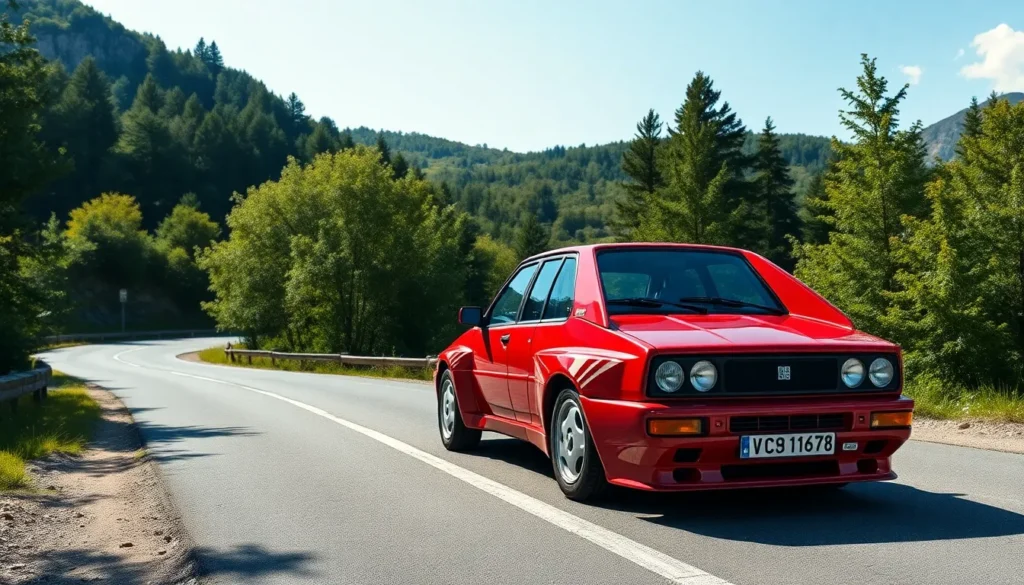When we think about legendary rally cars that dominated the Industry Rally Championship, the Lancia Delta Integrale immediately comes to mind. This Italian masterpiece didn’t just participate in motorsport—it absolutely conquered it, securing six consecutive constructors’ championships from 1987 to 1992. We’re talking about a car that rewrote the rules of rally racing and left competitors scrambling to catch up.
What makes the Delta Integrale truly special isn’t just its incredible racing pedigree. This turbocharged all-wheel-drive beast successfully bridged the gap between hardcore motorsport engineering and everyday usability. We’ve witnessed how this compact powerhouse transformed from a purpose-built rally weapon into one of the most sought-after performance cars of the late 80s and early 90s.
Today, we’ll explore why the Lancia Delta Integrale remains an icon that continues to capture enthusiasts’ hearts worldwide, commanding impressive prices and maintaining its status as the ultimate rally-bred road car.
What Makes the Lancia Delta Integrale Special
The Lancia Delta Integrale’s racing DNA distinguishes it from conventional hot hatchbacks. We see a sophisticated all-wheel-drive system that transfers power seamlessly between front and rear axles, providing exceptional traction in any condition. This Torsen differential technology originated directly from rally competition requirements.
Engine performance delivers remarkable power output from the 2.0-liter turbocharged four-cylinder unit. Racing pedigree shows through the intercooled turbocharger system that produces 185 horsepower in HF models and 210 horsepower in Evoluzione variants. Compression ratios of 8.0:1 optimize the forced induction setup for maximum efficiency.
Build quality reflects Italian craftsmanship with reinforced chassis construction. We observe additional structural bracing that strengthens the body shell beyond standard Delta specifications. Aerodynamic enhancements include functional front air dam, rear spoiler, and wider wheel arches that accommodate larger tires.
Handling characteristics demonstrate precise steering response through the variable-ratio rack and pinion system. Suspension components feature sport-tuned MacPherson struts with anti-roll bars calibrated for rally-inspired performance. Braking power comes from ventilated disc brakes on all four corners with ABS assistance.
Interior appointments combine practicality with performance-oriented features. We find Recaro sport seats that provide lateral support during spirited driving. Dashboard layout includes additional gauges for boost pressure, oil temperature, and voltmeter readings that monitor critical engine parameters.
Production numbers remained limited throughout the manufacturing run from 1987 to 1994. Factory records show approximately 44,296 total units across all variants, making authentic examples increasingly rare. Homologation requirements drove these production volumes to meet Group A rally regulations.
Market appeal continues growing among collectors who recognize the Delta Integrale’s significance in motorsport history. We observe rising values that reflect the car’s status as the final evolution of the legendary rally-winning platform.
Design and Styling Evolution
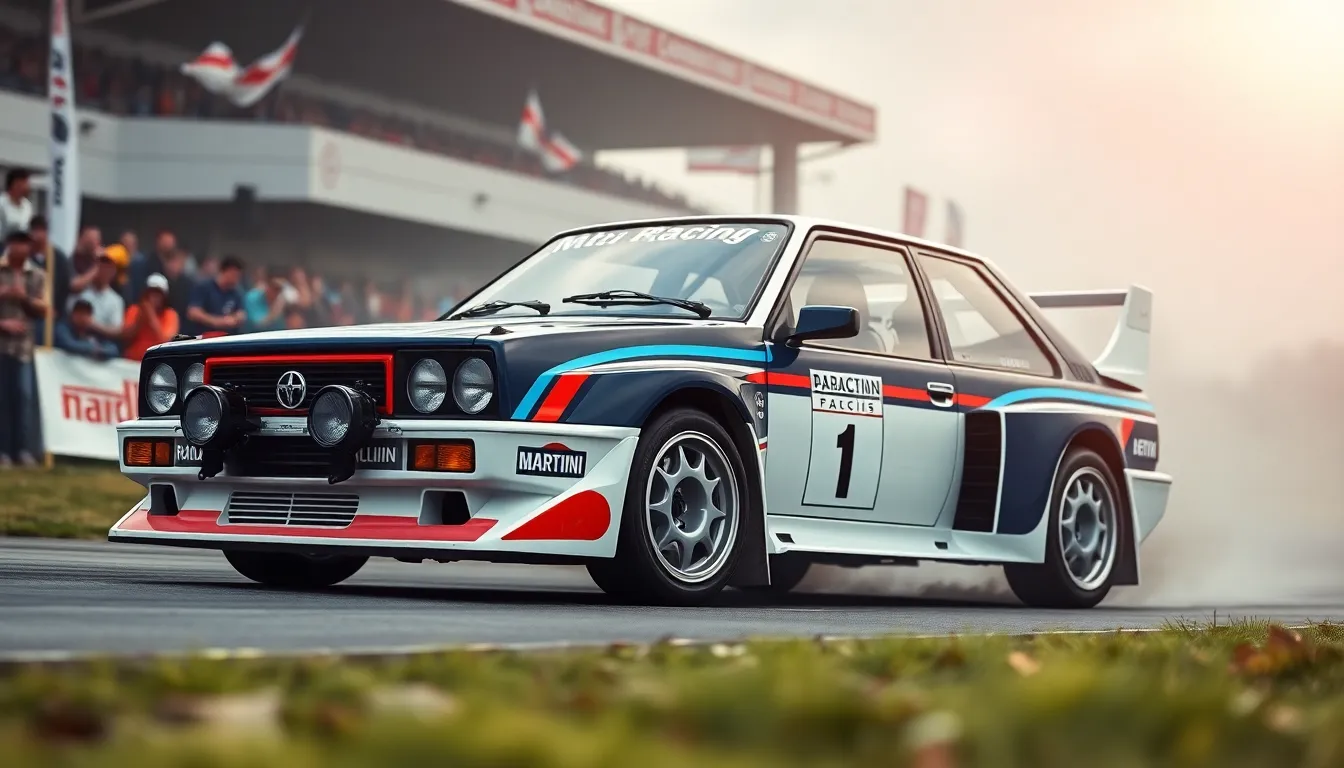
The Lancia Delta Integrale’s design underwent important refinements throughout its production run, transforming from the standard Delta hatchback into one of motorsport’s most recognizable silhouettes. We examine how Lancia’s engineers balanced aerodynamic efficiency with distinctive visual appeal while maintaining the car’s rally bred character.
Exterior Design Changes
Wider wheel arches became the Delta Integrale’s most distinctive feature, accommodating the all wheel drive system and larger wheels required for rally competition. These flared fenders extended the car’s width by 60mm compared to the standard Delta, creating an aggressive stance that immediately communicated the vehicle’s performance capabilities.
Front spoiler modifications included a deeper chin spoiler with integrated fog lights, improving both aerodynamics and visibility during competitive events. The hood featured functional air vents positioned strategically to extract heat from the turbocharged engine bay, while side skirts connected the front and rear aerodynamic elements seamlessly.
Rear wing development progressed through multiple iterations during the production years. Early models featured a subtle integrated spoiler, but later versions adopted more pronounced wings that generated additional downforce at high speeds. These aerodynamic enhancements contributed measurably to the car’s stability during rally stages.
Paint schemes varied significantly across production years, with iconic color combinations like Martini Racing livery becoming synonymous with the Delta Integrale’s competition heritage. Distinctive decal packages and rally inspired graphics options allowed owners to connect their road cars with the championship winning race machines.
Interior Features and Layout
Driver focused cockpit design prioritized ergonomics and functionality over luxury appointments. The dashboard layout placed essential controls within easy reach of the driver, featuring prominently positioned boost gauge and oil temperature monitor that provided critical engine information during spirited driving.
Sport seats with pronounced side bolsters offered exceptional lateral support during cornering maneuvers. These seats featured distinctive fabric patterns that became characteristic of the Delta Integrale’s interior aesthetic, combining durability with visual appeal that reflected the car’s competition origins.
Gear lever positioning and clutch pedal weight received exact tuning to accommodate the demands of rally driving techniques. The short throw manual transmission provided precise shift action, while the pedal arrangement allowed for heel toe downshifting during performance driving scenarios.
Interior trim materials balanced cost effectiveness with quality, featuring durable plastics and fabrics designed to withstand the rigors of both daily use and occasional track duty. Storage compartments throughout the cabin provided practical space for tools, spare parts, and personal items without compromising the performance oriented atmosphere.
Performance and Engine Specifications
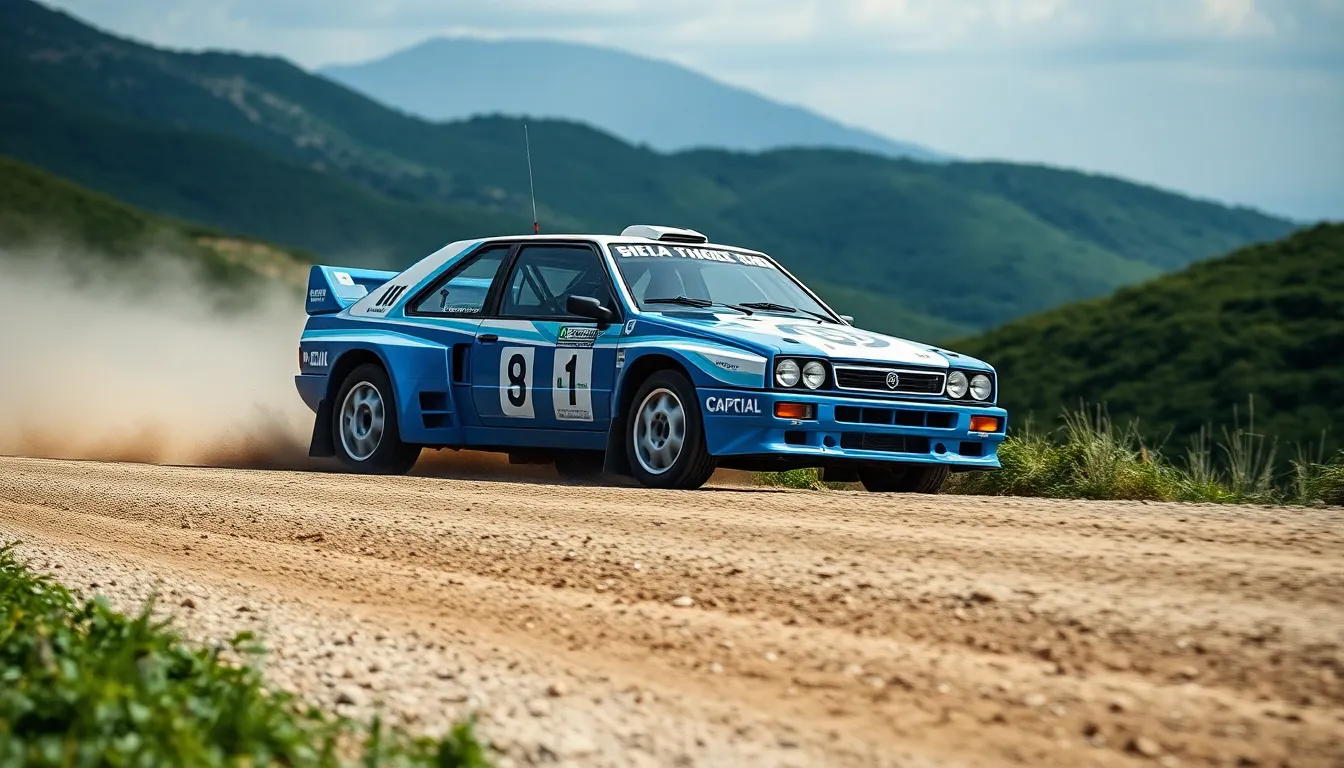
Building upon the Delta Integrale’s motorsport engineering foundation, we examine the technical specifications that transformed this rally champion into a road car phenomenon. The powertrain and drivetrain systems represent the pinnacle of 1980s performance technology.
Turbocharged Power Plant
The 2.0-liter DOHC inline-four engine forms the heart of the Delta Integrale’s impressive performance credentials. This turbocharged unit produces 185 horsepower in HF models and reaches 210 horsepower in Evoluzione variants, delivering power across a broad torque band from 3,500 to 4,500 RPM.
Engineers equipped the engine with an IHI turbocharger that generates maximum boost pressure of 1.4 bar (20.3 psi). The compression ratio measures 8.0:1, optimized for forced induction performance while maintaining reliability during sustained high-load operation.
Garrett intercooling technology reduces intake air temperatures by up to 60 degrees Celsius compared to ambient conditions. This cooling system enables consistent power delivery even during extended performance driving sessions that would challenge naturally aspirated engines.
The fuel injection system utilizes Weber-Marelli electronic management with dual injectors per cylinder in later models. Peak torque output reaches 304 Nm (224 lb-ft) at 2,500 RPM, providing strong acceleration from low engine speeds that proves essential for rally stage performance.
All-Wheel Drive System
The permanent all-wheel drive system distributes power through a sophisticated mechanical arrangement that maximizes traction across varied surface conditions. Ferguson viscous coupling technology transfers torque between front and rear axles automatically based on grip availability and wheel slip detection.
Front-to-rear torque distribution varies from 56:44 under normal conditions to 70:30 during high-traction scenarios. The system responds within milliseconds to changing road conditions without requiring driver input or electronic intervention.
Torsen differential technology manages power distribution between individual wheels on each axle. This mechanical system prevents wheel spin by redirecting torque to the wheel with better grip, eliminating the need for electronic traction control systems that weren’t available during the Delta Integrale’s production period.
The drivetrain features a close-ratio five-speed manual transmission with reinforced internals designed to handle the turbocharged engine’s output. Gear ratios are optimized for rapid acceleration through the rev range while maintaining reasonable fuel consumption during highway cruising.
Rally Heritage and Motorsport Success
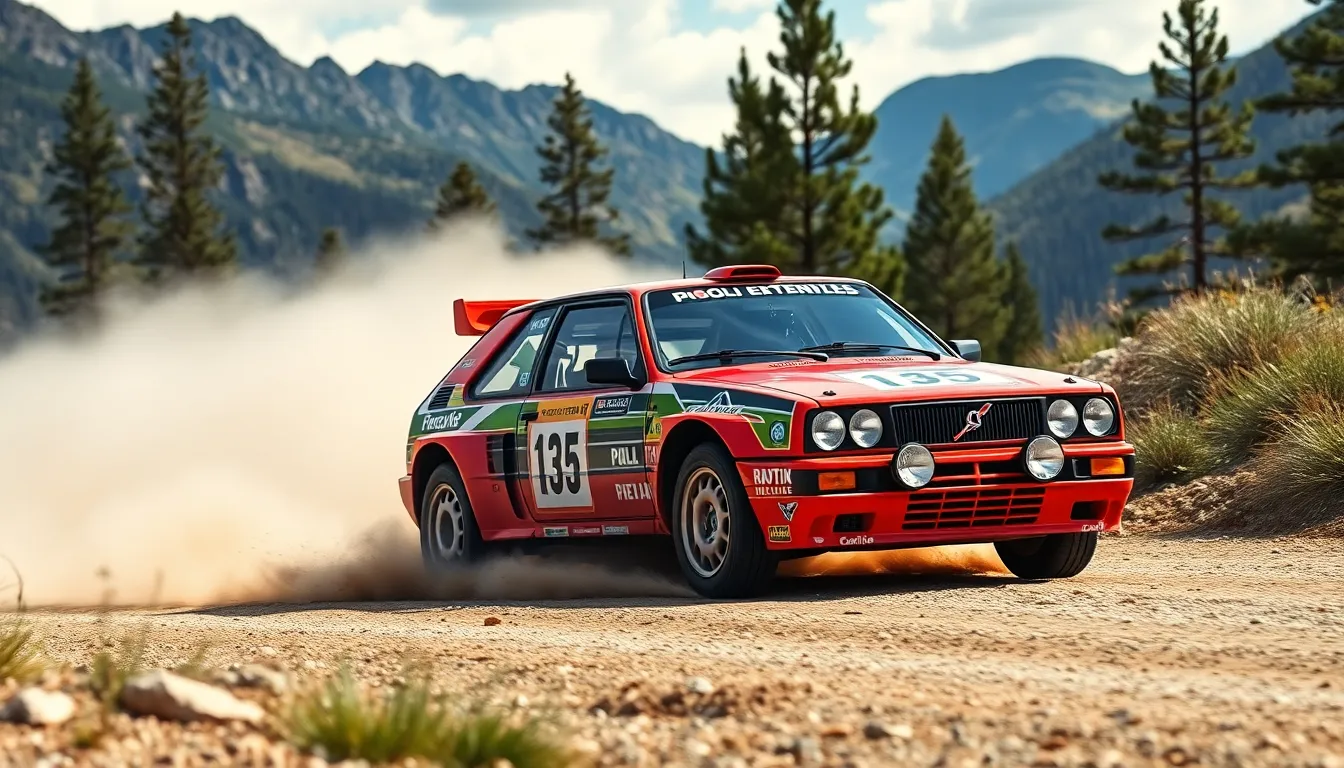
The Lancia Delta Integrale established its legendary status through unprecedented domination in professional motorsport competition. Our examination of its rally heritage reveals the engineering excellence that made this Italian performance car an unstoppable force on international racing circuits.
Industry Rally Championship Dominance
Industry Rally Championship records show the Delta Integrale’s absolute supremacy across six consecutive seasons from 1987 to 1992. Lancia secured 46 individual rally victories during this dominant period, establishing motorsport statistics that remain unmatched in WRC history. The Delta Integrale captured constructors’ championships in 1987, 1988, 1989, 1990, 1991, and 1992, creating the longest winning streak in Industry Rally Championship competition.
Competition success stemmed from the Delta Integrale’s advanced technical package that combined Italian engineering innovation with proven motorsport reliability. Rally versions featured enhanced aerodynamic components, strengthened suspension systems, and modified engine mapping that delivered consistent performance across diverse terrain conditions. Racing development programs continuously refined the Delta Integrale’s chassis dynamics, resulting in improved handling characteristics that translated directly to production road cars.
Manufacturing data indicates Lancia produced exact homologation variants to meet FIA Group A regulations throughout the competition years. The Delta HF 4WD introduced permanent all-wheel drive technology in 1987, while the Delta HF Integrale debuted wider bodywork and increased power output in 1988. Evolution models featured advanced aerodynamic packages and refined drivetrain components that reflected ongoing motorsport development.
Legendary Drivers and Victories
Championship drivers elevated the Delta Integrale’s competition legacy through remarkable individual achievements across international rally stages. Juha Kankkunen secured two drivers’ championships in 1987 and 1991, demonstrating the car’s adaptability to different driving styles and competitive strategies. Miki Biasion claimed consecutive drivers’ titles in 1988 and 1989, establishing Finnish and Italian driving excellence behind the Delta Integrale’s wheel.
Victory statistics highlight the Delta Integrale’s dominance across varied rally conditions and international competition venues. Notable achievements include Monte Carlo Rally wins in 1988, 1989, 1992, and 1993, showcasing exceptional performance on challenging tarmac and snow stages. Rally Finland victories in 1987, 1991, and 1992 demonstrated the car’s capability on high-speed gravel surfaces that demanded maximum chassis stability and engine reliability.
Driver testimonials consistently praise the Delta Integrale’s balanced handling characteristics and predictable performance limits during competitive driving situations. Racing legends describe the car’s responsive steering feedback, progressive power delivery, and confidence-inspiring traction management across changing surface conditions. These professional insights validate the engineering decisions that made the Delta Integrale equally capable as a competition weapon and road-going performance car.
Driving Experience and Handling
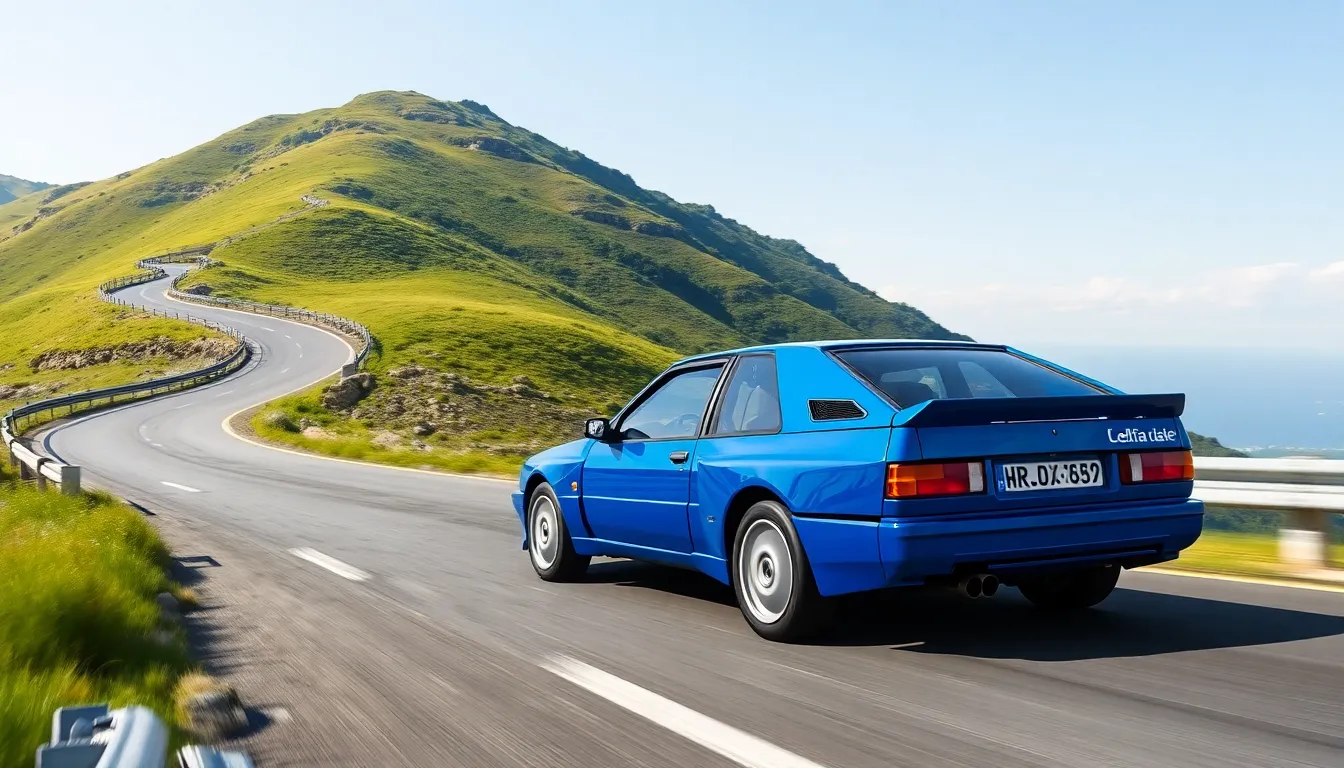
The Delta Integrale’s driving experience translates its rally-bred engineering into an exceptional on-road performance package. Every aspect of its handling characteristics reflects the motorsport DNA that made it a championship-winning machine.
On-Road Performance
The Delta Integrale delivers immediate throttle response through its turbocharged powerplant, launching from 0-60 mph in 5.7 seconds with the Evoluzione variant achieving even quicker acceleration times. Cornering capabilities exceed expectations for a vehicle weighing 1,345 kilograms, with the all-wheel drive system distributing power seamlessly across all four wheels.
Steering precision remains sharp and communicative at highway speeds, providing drivers with constant feedback about road surface conditions and tire grip levels. The sport-tuned suspension absorbs road irregularities while maintaining body control during aggressive driving maneuvers. Braking performance utilizes ventilated disc brakes at all four corners, delivering consistent stopping power that matches the car’s acceleration capabilities.
High-speed stability becomes evident on open roads where the Delta Integrale tracks straight without requiring constant steering corrections. The aerodynamic package generates downforce that keeps the car planted during spirited driving sessions. Gear changes through the five-speed manual transmission engage with mechanical precision, allowing drivers to exploit the engine’s 210 horsepower output effectively.
Build Quality and Reliability
Italian craftsmanship defines the Delta Integrale’s construction standards, with robust components designed to withstand both daily driving and performance use. The unibody structure incorporates reinforcements in critical stress areas, ensuring structural integrity during high-load situations.
Engine durability has proven exceptional across thousands of examples, with many units exceeding 200,000 kilometers without major mechanical issues when properly maintained. The turbocharger system demonstrates longevity when drivers allow adequate warm-up periods and follow recommended service intervals. Transmission components handle the engine’s torque output reliably, though clutch replacement becomes necessary around 80,000 kilometers depending on driving style.
Electrical systems operate consistently, though some older examples may experience issues with window regulators and climate control modules. The all-wheel drive system requires periodic maintenance of differential fluids and viscous coupling components to maintain optimal performance. Corrosion resistance varies by production year and storage conditions, with later Evoluzione models showing improved protection in critical areas.
Parts availability remains adequate for most mechanical components, though certain trim pieces and electrical components become increasingly difficult to source. Independent specialists familiar with Lancia systems provide essential maintenance support, as authorized dealer networks have diminished significantly in many markets.
Market Value and Collectibility
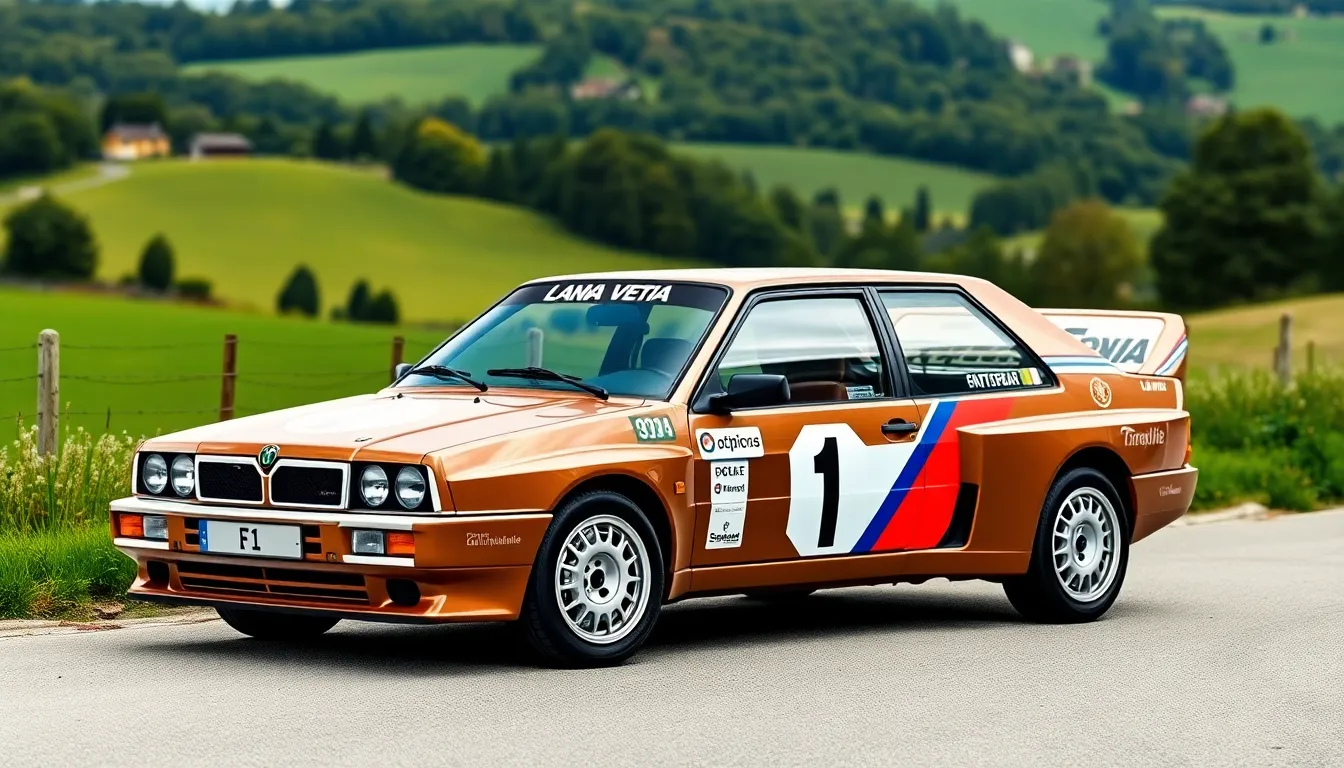
The Lancia Delta Integrale’s motorsport legacy and limited production numbers have transformed it into one of the most sought-after collectible rally cars. Values continue climbing as enthusiasts recognize its significance in automotive history.
Current Pricing Trends
Market values for authentic Delta Integrale examples vary significantly based on condition, mileage, and variant specifications. Original HF models typically trade between $35,000 and $55,000 for well-maintained examples with documented service histories. Evoluzione variants command premium pricing, often exceeding $65,000 for pristine specimens with under 100,000 kilometers.
Restoration projects and higher-mileage examples start around $18,000 to $25,000, though buyers must factor substantial restoration costs for mechanical and cosmetic refurbishment. Championship commemorative editions and factory special variants like the Martini 5 and Martini 6 models achieve auction prices approaching $85,000 to $120,000.
Geographic markets influence pricing considerably, with European examples generally commanding higher values than US-imported vehicles. Japanese domestic market cars often present exceptional condition due to strict maintenance culture, resulting in premium valuations even though import considerations.
| Model Variant | Condition | Price Range (USD) | Market Availability |
|---|---|---|---|
| HF Standard | Excellent | $45,000-$55,000 | Limited |
| HF Standard | Good | $30,000-$40,000 | Moderate |
| Evoluzione | Excellent | $60,000-$75,000 | Rare |
| Special Editions | Concours | $85,000-$120,000 | Very Rare |
| Project Cars | Poor/Fair | $18,000-$25,000 | Available |
Investment Potential
Delta Integrale values demonstrate consistent appreciation patterns over the past decade, with quality examples gaining 8% to 12% annually. Factors driving investment demand include motorsport heritage recognition, decreasing availability of original examples, and growing collector interest in 1990s performance icons.
Authenticity verification becomes critical for investment purchases, as modified examples significantly underperform original specifications in value retention. Matching numbers examples with complete documentation packages offer the strongest appreciation potential, particularly vehicles with verifiable racing provenance or celebrity ownership history.
Market analysts project continued value growth driven by emotional purchasing decisions from enthusiasts who experienced the Delta Integrale’s rally dominance firsthand. Younger collectors increasingly recognize the model’s technical sophistication and historical importance, expanding the potential buyer base beyond traditional Italian car enthusiasts.
Storage and maintenance costs remain reasonable compared to exotic supercars, making the Delta Integrale accessible to serious collectors without requiring extensive specialized facilities. Parts availability through specialist networks supports ownership confidence, though original trim components may appreciate independently as restoration demand increases.
Buying Guide and What to Look For
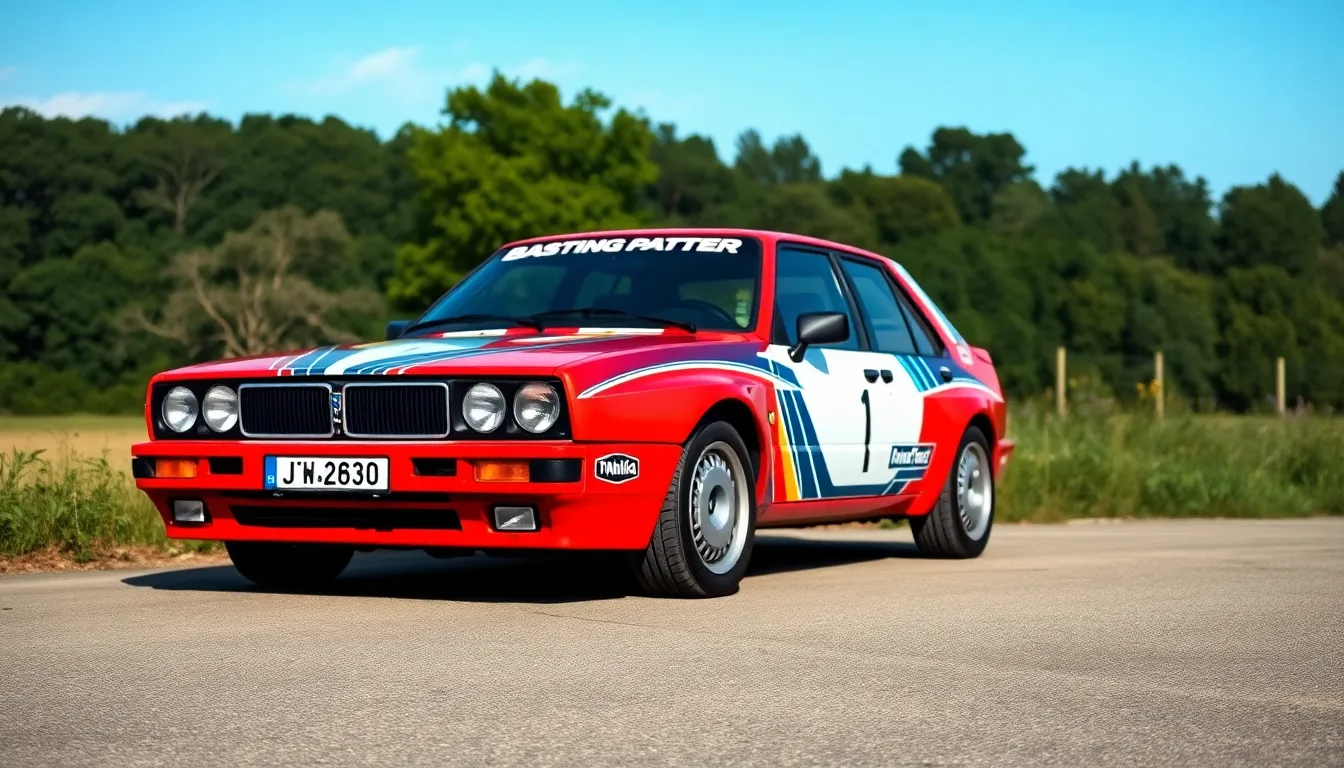
Purchasing a Lancia Delta Integrale requires careful inspection and thorough understanding of potential issues that affect these rally legends. We’ve compiled essential insights to guide buyers through the complexities of acquiring one of motorsport’s most coveted vehicles.
Common Issues and Problems
Rust and Corrosion represent the primary concern for Delta Integrale buyers across all model years. Steel body panels around wheel arches, door frames, and rear quarters develop oxidation issues particularly in models manufactured between 1987 and 1991. Sills and floor pans accumulate moisture and salt damage, while the rear hatch area frequently shows signs of water infiltration that compromises structural integrity.
Turbocharger wear affects units with higher mileage due to the demanding nature of the IHI turbocharger system. Symptoms include excessive oil consumption exceeding 1 liter per 5,000 kilometers, blue exhaust smoke during acceleration, and reduced boost pressure readings below 0.8 bar. Replacement costs typically range from $2,500 to $4,200 including labor and associated components.
All-wheel drive system complications emerge from worn Ferguson viscous couplings and Torsen differential components. Owners report binding during tight turns, unusual tire wear patterns, and grinding noises from the drivetrain during parking maneuvers. Complete system overhauls cost between $3,800 and $6,500 depending on component replacement requirements.
Electrical problems plague models with original wiring harnesses due to age-related deterioration of insulation materials. Dashboard warning lights malfunction, power windows operate intermittently, and fuel injection systems develop sensor failures that affect engine performance. Weber-Marelli ECU units from early production runs exhibit particular sensitivity to voltage fluctuations.
Suspension bushings deteriorate after 150,000 kilometers, causing handling characteristics to deviate from factory specifications. Front control arm bushings wear first, followed by rear trailing arm connections that create alignment issues and premature tire wear patterns.
Maintenance Considerations
Service intervals require strict adherence to maintain reliability and performance standards across all Delta Integrale variants. Oil changes occur every 7,500 kilometers using synthetic 5W-40 grade lubricants, while turbocharger cooling demands additional attention through proper warm-up and cool-down procedures. Timing belt replacement happens every 60,000 kilometers with simultaneous water pump and tensioner updates.
Parts availability varies significantly between mechanical and cosmetic components throughout the global marketplace. Engine internals, transmission parts, and suspension components remain accessible through Lancia specialists and aftermarket suppliers at reasonable prices. Interior trim pieces, exterior badges, and exact Evoluzione components command premium prices due to limited production quantities and collector demand.
Specialist knowledge becomes essential for proper maintenance since conventional mechanics lack familiarity with all-wheel drive systems and turbocharger management. Independent Lancia specialists charge $95 to $140 per hour for diagnostic work, while complete engine rebuilds range from $8,500 to $12,000 depending on component replacement needs.
Annual maintenance costs average $2,200 to $3,500 for vehicles in regular use, excluding major component replacements or restoration work. Insurance premiums reflect the car’s collector status with agreed value policies ranging from $850 to $1,400 annually for coverage between $45,000 and $65,000.
Storage requirements protect investment value through climate-controlled environments that prevent moisture accumulation and temperature fluctuations. Battery maintenance systems preserve electrical components during extended storage periods, while fuel stabilizers prevent ethanol-related damage to injection systems and fuel lines.
Conclusion
The Lancia Delta Integrale stands as a testament to what happens when rally-bred engineering meets everyday practicality. We’ve explored a machine that didn’t just dominate motorsport but also delivered an authentic performance experience to enthusiasts worldwide.
Today’s market clearly recognizes the Delta Integrale’s significance. Values continue climbing as collectors appreciate both its racing pedigree and engineering excellence. For those considering ownership we recommend thorough inspection and understanding of maintenance requirements.
Whether you’re drawn by its motorsport legacy or simply want to experience genuine Italian performance engineering the Delta Integrale remains one of the most rewarding enthusiast cars ever created. It’s a vehicle that successfully bridged the gap between professional racing and road-going excitement.
Frequently Asked Questions
What made the Lancia Delta Integrale so successful in rally racing?
The Delta Integrale dominated rally racing through its sophisticated all-wheel drive system with Torsen differential technology, powerful 2.0-liter turbocharged engine producing up to 210 horsepower, and advanced aerodynamics. It won six consecutive World Rally Championship constructors’ titles from 1987-1992 with 46 individual victories, driven by legends like Juha Kankkunen and Miki Biasion.
How much does a Lancia Delta Integrale cost today?
Current market prices vary significantly based on condition and variant. Well-maintained HF models typically range from $35,000 to $55,000, while Evoluzione variants can exceed $65,000. Special editions reach $85,000 to $120,000 at auction. Restoration projects start around $18,000 to $25,000, making authenticity verification crucial for investment purchases.
What are the key technical specifications of the Delta Integrale?
The Delta Integrale features a 2.0-liter DOHC turbocharged inline-four engine producing 185-210 horsepower depending on variant. It includes permanent all-wheel drive with Ferguson viscous coupling technology, Torsen differentials, and a close-ratio five-speed manual transmission. Advanced features include IHI turbocharging, Garrett intercooling, and Weber-Marelli fuel injection systems.
What common problems should buyers watch for when purchasing a Delta Integrale?
Common issues include rust and corrosion (especially around wheel arches), turbocharger wear, all-wheel drive system complications, electrical problems, and suspension bushing deterioration. Thorough inspection is essential, particularly checking for authentic components and proper maintenance history. Professional pre-purchase inspections are highly recommended.
Is the Lancia Delta Integrale reliable for daily driving?
Yes, the Delta Integrale was designed to combine motorsport performance with everyday usability. Many units exceed 200,000 kilometers without major issues thanks to robust construction. However, specialist maintenance knowledge is required, and while mechanical parts remain available, some trim pieces may be harder to source.
How has the Delta Integrale’s value changed over time?
Values have appreciated consistently over the past decade due to decreasing availability and growing collector interest. The combination of motorsport heritage, limited production numbers (1987-1994), and increasing rarity has made it one of the most sought-after collectible rally cars with strong investment potential for well-maintained examples.
What makes the Delta Integrale different from other hot hatchbacks?
Unlike conventional hot hatchbacks, the Delta Integrale features genuine rally-bred engineering with sophisticated all-wheel drive technology, motorsport-derived aerodynamics, and a turbocharged engine designed for competition. Its six consecutive World Rally Championship titles and 46 victories demonstrate authentic racing pedigree that sets it apart from street-focused performance cars.
What are the annual maintenance costs for a Delta Integrale?
Annual maintenance costs are reasonable for serious collectors, though specialist knowledge is required for proper upkeep. Regular service intervals must be maintained, and proper storage is essential to protect investment value. Independent specialists provide crucial maintenance support, making ownership accessible despite the car’s sophisticated engineering.

